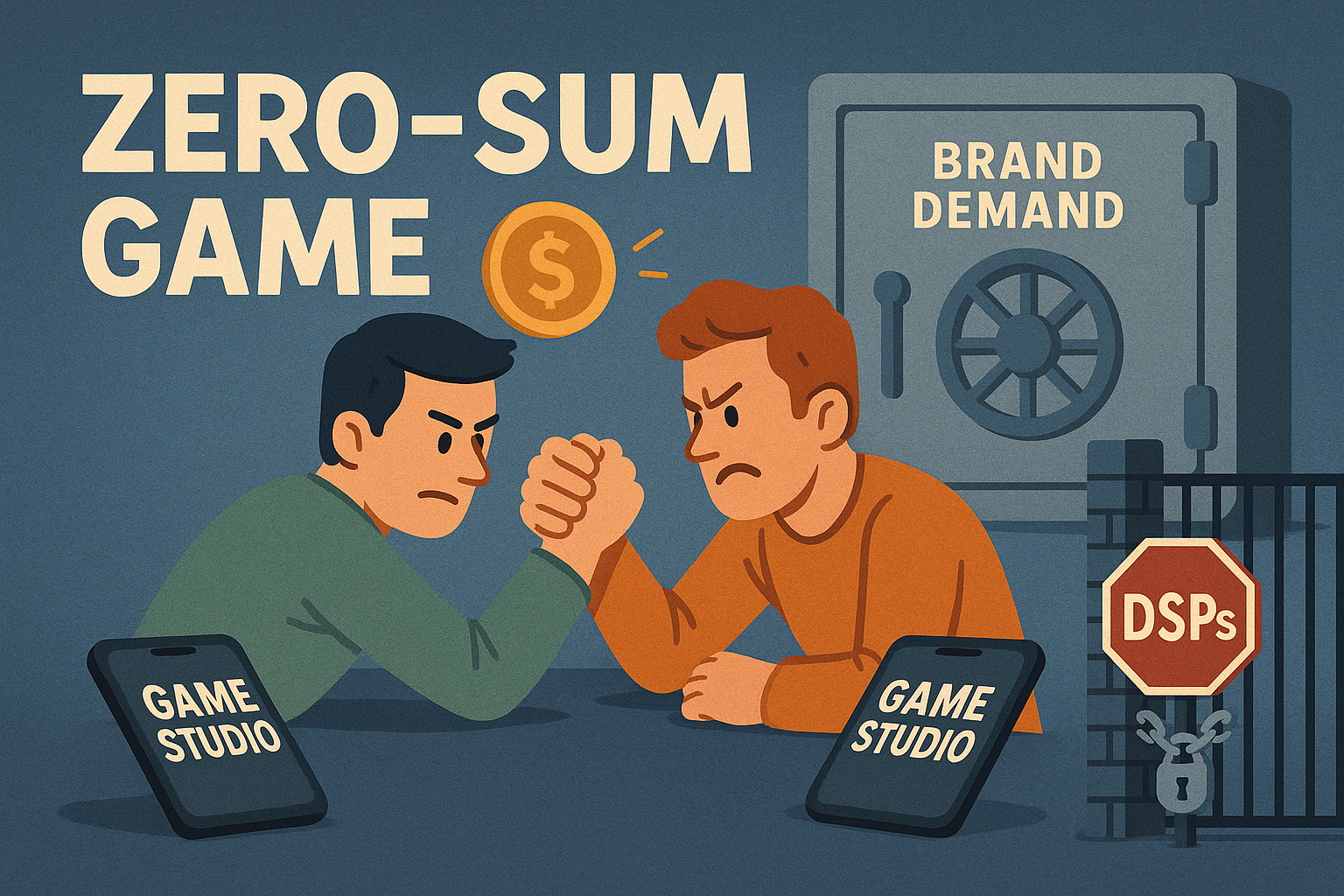This post originally appeared on Inside the Bid, our series on untangling mobile ad mediation for studios across Southeast Asia.
The playbook is no longer working
From our recent conversations with mobile studios across some countries in South East Asia, from lean teams to those operating at nine-figure scale, a familiar pattern emerges.
They’ve been following the playbook:
- integrating “the best” mediation platform(s)
- leaning into platform recommendations (and incentives)
- layering on new ad network SDKs – despite the tradeoffs in app size, engineering effort, and release speed.
- and oftentimes, chasing short-term wins with “tips and tricks”: aggressive refreshes, low-quality formats, or network-specific hacks.
Yet ad monetization performance keeps slipping: eCPMs fluctuate, fill rates stall, ARPDAU underdelivers. And the levers available to fix things feel increasingly limited. If you have spent some time in mobile ad monetization Reddit or Facebook groups, you have probably seen the same complaints pop up again and again.
It’s not lack of effort – it’s a lack of visibility. A growing sense that something important is happening beneath the stack but out of reach.
A closer look at the stack
In case you are new to mobile ad monetization – most apps don’t sell ads directly. Instead, they use a mediation platform – a software that connects their app to multiple ad networks and selects which ad to show via real-time auction – to sell their ads.
In Vietnam and broader Southeast Asia, mobile ad monetization is heavily consolidated around a few major platforms:
- In gaming, AppLovin MAX is the dominant choice, used by ~75% of top-grossing titles.
- In non-gaming, Google AdMob leads, especially for banners and simpler formats.
- LevelPlay (and a few others) remains a relevant alternative, particularly among performance marketers and cross-format setups.
These stacks make monetization easy but usually at the expense of being opaque. Studios rarely see what’s really happening inside the auction – which networks win, why bids lost, what ads are served, or what high-value demand are filtered out.
For a deeper breakdown, check out this excellent primer: The Stack #0: The Case for Ad Monetization →
The real issue isn’t execution – it’s visibility
Mediation platforms are built to help publishers access demand but in practice, most revenue comes from a few large closed-loop ad networks. Many of those networks are owned by the mediation platforms (sorry, no naming of names!), which makes the auction not exactly neutral. Often, these networks get priority access or favorable treatment within their own stack.
These networks mostly promote other mobile games and apps, often from within the same ecosystem. What looks like an open auction is really a closed circle – games advertising in games, competing for the same budgets and user attention.
In that setup, every dollar gained by one studio is a dollar lost by another. It’s a zero-sum game. For teams that are looking to grow beyond recycled demand, that model starts to break down.
It also hides what matters:
- No way to test or adjust price floors safely
- No visibility into why bids lose
- No signal when high-value demand is blocked
- No feedback loop to improve what matters
And the biggest thing it hides? The demand that isn’t in the room: Brand advertisers, programmatic DSPs, and premium buyers from outside mobile rarely win in these stacks – if they get to bid at all.
If you can’t see it, you can’t optimize for it.
This isn’t just a tooling issue. It’s a market access problem and it costs more than most teams realize.
What really matters
We believe that most if not all mobile studios probably aren’t asking for visibility just for the sake of control. What they care about is results.
As Tracy Phan – ad monetization consultant and author of The Stack newsletter, drawing on years of hands-on experience with mobile studios across Southeast Asia – noted clearly:
“Studios are highly cost-sensitive… if the potential uplift is less than 5%, it’s just not worth pursuing.”
They want ROI, fast and furious! But when critical demand is missing or underexposed, no amount of tweaking levers can close the gap.
So the real opportunity is about finding and recovering the revenue your stack might be unknowingly leaking and doing it without disrupting what’s already working.
Recap: What’s missing from the picture
What looks like a streamlined, optimized ad monetization stack often conceals deeper structural limitations. Mediation platforms come with blind spots that cost studios more than they realize.
At a high level, here’s what we’ve observed:
- Most of the demand you’re connected to comes from a few closed-loop networks.
- Valuable demand sources – like brand buyers or DSPs – often don’t get a fair chance to compete.
- Studios have no easy way to test or optimize their setup for long-term performance – at least not without risk or disruption to what’s already running.
And these are just the tip of the iceberg. In our upcoming series of posts, we’ll unpack what’s really going on beneath the surface: where untapped value is hiding, how publishers can unlock new demand, grow beyond the zero-sum dynamics of closed networks, and take back what’s been quietly slipping away.
Coming next
In the next post, we’ll take a closer look at one of the biggest sources of revenue leakage. We’ll map out the hidden economics of the mobile ad supply chain, from advertiser to publisher, and explain why some of the highest-value demand sources never make it through mediation.
If you’ve ever wondered whether your demand is truly competing on equal footing, or how to recover value that’s inconspicuously leaking, our next post will show you how to do it without disrupting your current setup.
Want to follow the series?
Subscribe to Inside the Bid to get new posts straight to your inbox.
Want to talk through your own ad monetization challenges?
Reach out here — we’d love to hear from you.

